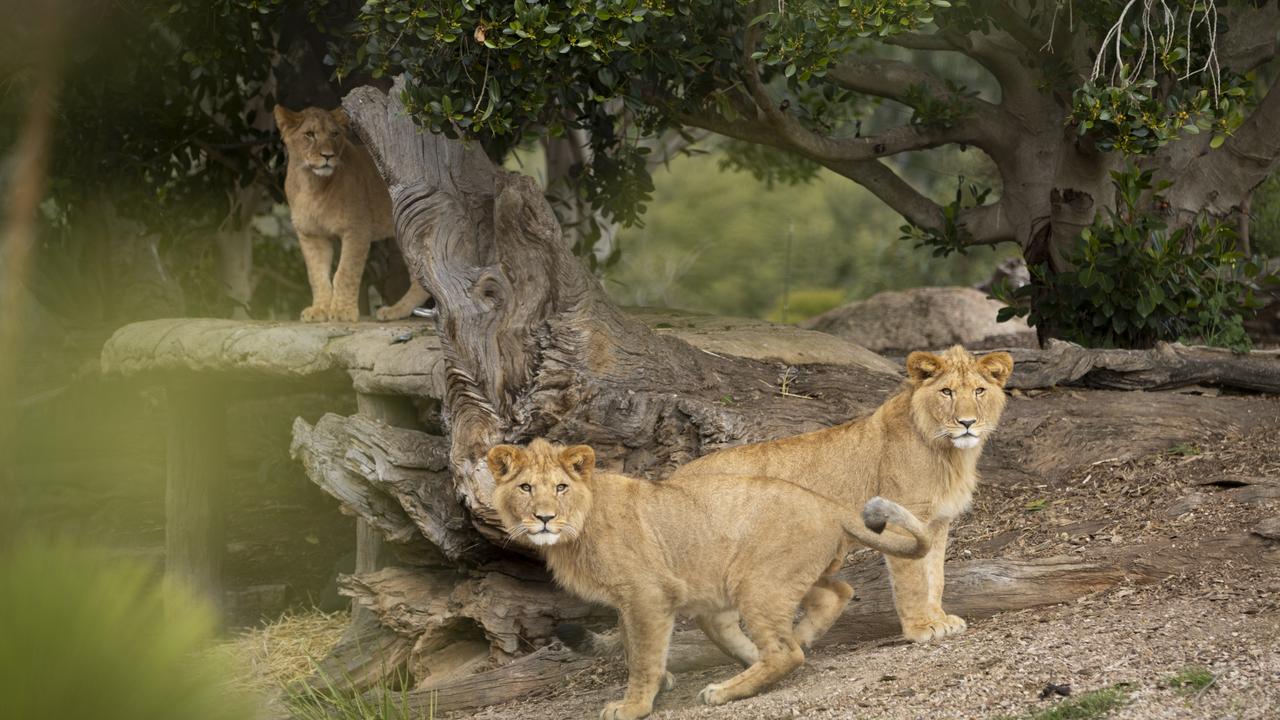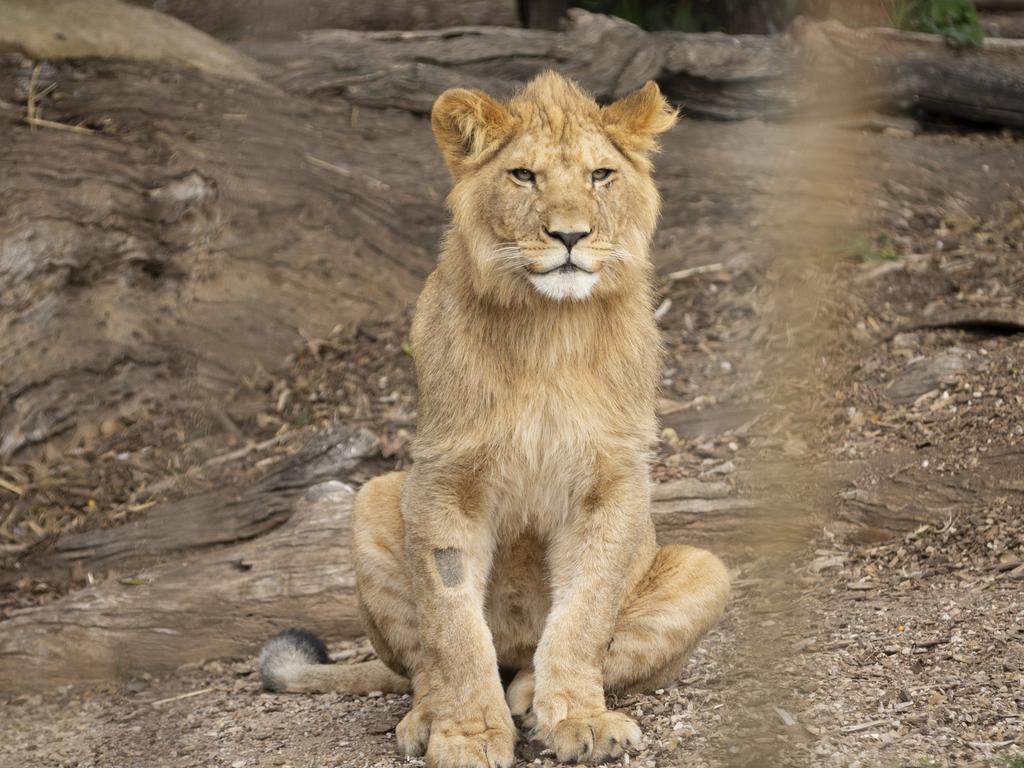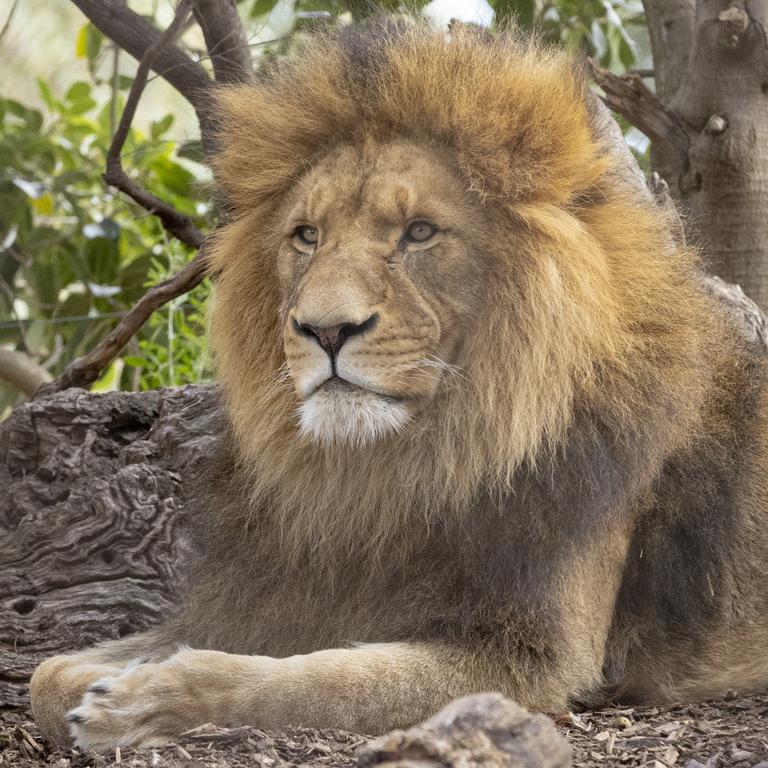Jango and Mwezi: Lion cubs at Werribee Zoo roar into adulthood with growing manes
They captured hearts around the nation as cute and fluffy cubs, now lions Jango and Mwezi have marked a significant milestone at Werribee Open Range Zoo

READING LEVEL: GREEN
Werribee Open Range Zoo’s lion cubs Jango and Mwezi are officially stepping into adulthood by growing their distinctive* manes.
These adorable brothers, who captured hearts across Australia when they were born last year, have started to grow a short, fuzzy collar around their necks, shoulders and ears.

“The growth of their manes marks the cubs’ transition into subadults*, which is comparable to humans reaching their early teenage years,” the Victorian zoo’s African River Trail keeper Laura Hickleton said.
“They’re also looking a little lanky* in stature and their manes are quite patchy and different colours. So, they are definitely in their awkward ‘teenage’ phase.”

It will be a few more years before Jango and Mwezi achieve the thick and luxurious mane of their father, Sheru, who is seven years old and weighs a majestic* 180 kilograms compared to the cubs’ 85-90 kilograms.
Manes aren’t just for looks, they serve many important purposes in a lion’s life.
They indicate dominance and strength, helping males win fights over territory, food and mates.

Additionally, a mane provides protection during physical clashes by cushioning* bites and blows. And when it comes to romance, a lion’s mane can attract the attention of lionesses during courtship* displays.
In the wild, African lions face serious threats, with their population dwindling* to about 39,000 due to human-wildlife conflict, poaching, and habitat loss.

At Werribee Open Range Zoo, the lion pride, including Jango, Mwezi, and their family, plays a crucial role in the Australasian* zoo breeding and conservation program.
This program not only helps maintain lion populations but also supports the health and behaviour of these magnificent animals.
Visitors to the zoo can witness Jango and Mwezi’s growth first-hand along the African River Trail, where they continue to learn and thrive under the care of dedicated* keepers like Ms Hickleton.
Fun Facts About Lions
Scientific name: Panthera leo
Habitat: Lions are native to sub-Saharan Africa and once roamed across much of the continent. They prefer grasslands, savannas and open woodlands.
Physical characteristics: Adult males (called lions) are easily recognisable by their impressive manes, which vary in colour from blond to black and serve to make them look larger and more intimidating.
Lionesses (females) lack manes and are generally smaller and more agile than males.
Diet: Lions are apex predators and primarily hunt large herbivores such as zebras, wildebeest, and buffalo. Lionesses are the primary hunters in a pride.
Social structure: Lions are social animals and live in groups called prides. A pride usually consists of several related females, their cubs and one or more adult males. The males protect the pride and territory.
Reproduction: Lionesses give birth to between one and six cubs after a gestation period of around 110 days. Cubs are born blind and rely on their mother for the first few months. They start to eat meat at around three months old and stay with the pride until they are about two years old.
Conservation status: African lions are classified as Vulnerable by the International Union for Conservation of Nature (IUCN). Their population has declined significantly due to habitat loss, human-wildlife conflict and poaching.
Role in ecosystem: Lions play a crucial role in their ecosystems by regulating prey populations and influencing the structure of their habitats.
Cultural significance: Lions have been prominent symbols in various cultures and are often associated with courage, strength and royalty.
Interesting fact: Male lions may sleep up to 20 hours a day, conserving energy for hunting during cooler periods such as dawn and dusk.
GLOSSARY
- distinctive: unique or easily recognisable
- subadults: young animals approaching adulthood
- lanky: tall and thin, often awkward in appearance
- majestic: grand or impressive
- cushioning: softening the impact of
- courtship: the process of attracting and selecting a mate
- dwindling: gradually decreasing
- Australasian: relating to Australia and nearby regions
- dedicated: committed or devoted
EXTRA READING
Adorable new cubs born at Victorian zoo
Quirky dating dance leads to endangered chick boom
Camels’ classic response to pesto
QUICK QUIZ
1. What are the names of the lion cubs at Werribee Open Range Zoo?
2. What physical feature are Jango and Mwezi beginning to develop?
3. According to the story, what does the growth of the cubs’ manes indicate?
4. Why do male lions have larger and darker manes?
5. Why are African lions classified as Vulnerable by the IUCN?
LISTEN TO THIS STORY
CLASSROOM ACTIVITIES
1. Ideas from points of a compass
This “compass points thinking” routine makes you consider four different things from the points of a compass (N, S, E, W).
After reading the article about these subadult lions, consider the following:
1. E = Excited
What excites you about these animals? What’s the upside?
2. W = Worrisome
What do you find worrisome about the ideas in this article? What’s the downside?
3. N = Need to know
What else do you need to know or find out about these creatures and their issues? What additional information would help you to evaluate things?
4. S = Stance or suggestion for moving forward
What is your current stance or opinion on how to keep the great species alive and thriving?
Time: allow 30 minutes to complete this activity
Curriculum Links: English, Science, Personal and Social, Critical and Creative Thinking
2. Extension
Think of some weird, wonderful and funny ideas for how these lions should tame and style their mane to attract a mate? Draw some sketches of your ideas below!
Time: allow 15 minutes to complete this activity
Curriculum Links: English, Visual Art, Personal and Social, Critical and Creative Thinking
VCOP ACTIVITY
Vocabulary recycle
There is some vivid vocabulary being used in the article, and I am not just talking about the glossary words. Go through the article and highlight the high-level language that you are impressed by in yellow.
See if you can borrow two of these wow words to reuse in your own way.
Remember vocabulary is a great way to connect with the audience, but you need to think about who your audience is so you make great word choices.
Who will the audience be in your recycled sentences?

